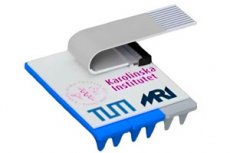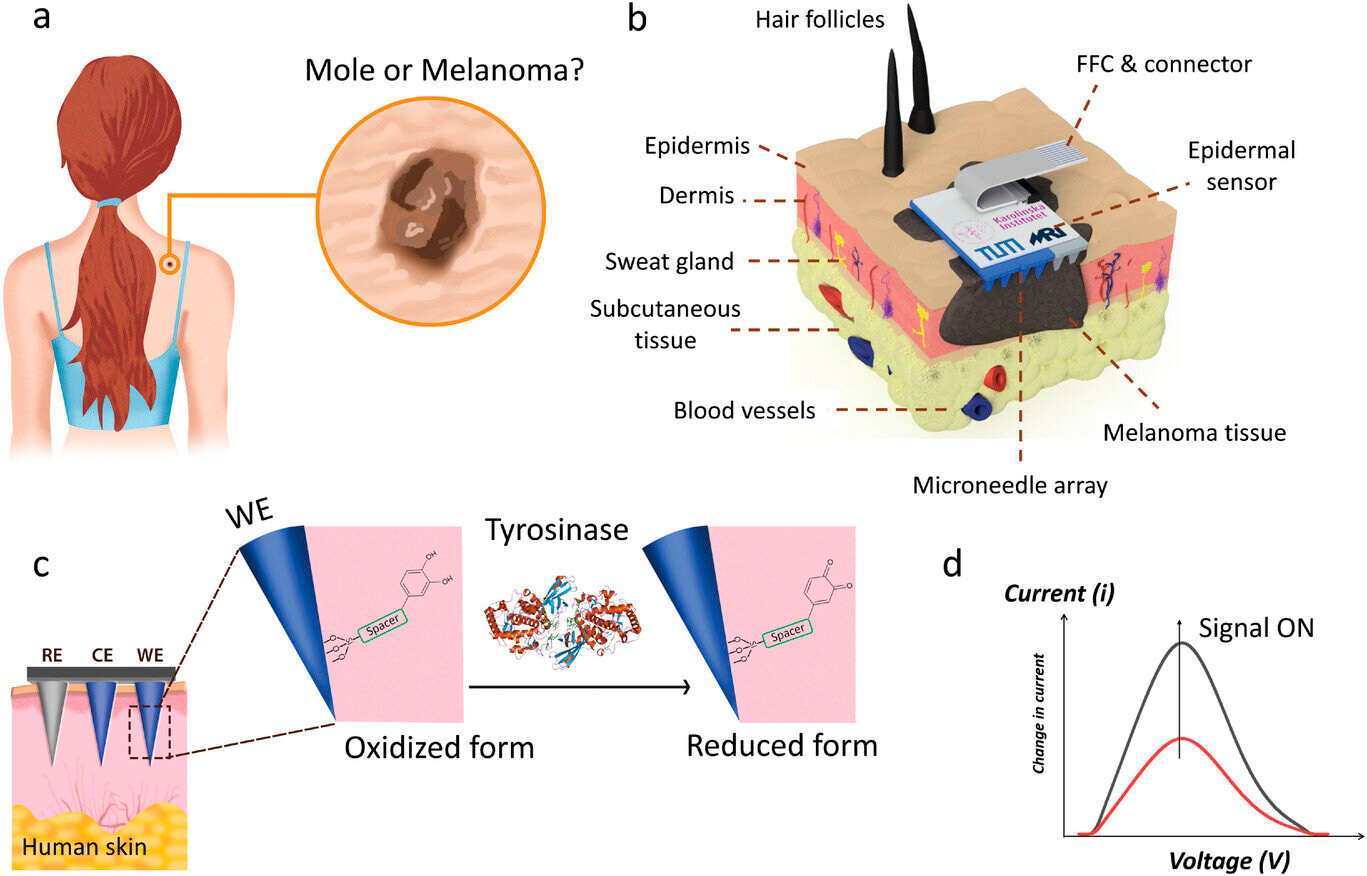
30 May 2024, 10:11
卡罗琳斯卡医学院的研究人员开发了一种检测恶性黑色素瘤的新方法。根据发表在《先进材料》杂志上的一项研究,一种配备微针的新型贴片可以直接在皮肤中识别生物标志物酪氨酸酶。
该贴片配备了可以检测酪氨酸酶的微针,酪氨酸酶是恶性黑色素瘤的重要生物标志物。通过直接测量皮肤中这种酶的水平,研究人员可以快速识别与该疾病相关的变化。
“我们使用了健康个体的人体组织。通过将酪氨酸酶直接涂抹在皮肤上,我们能够模拟皮肤癌,”该研究的最后一位作者、卡罗琳斯卡医学院太阳医学系副教授奥努尔·帕拉克(Onur Parlak)解释道。
“这是改善皮肤健康监测的重要一步,而且只需改变设计,该方法还可以用来筛查其他生物标志物。”

带智能探针的表皮微针传感器贴片示意图。图中展示了患者背部黑变性皮肤。来源:Advanced Materials (2024)。DOI:10.1002/adma.202403758
恶性黑色素瘤是最严重的皮肤癌,也是增长最快的癌症。这项研究表明,一种新型贴片可以替代目前的诊断方法,从而更早地发现和治疗恶性黑色素瘤。研究人员希望他们的研究能够减少手术次数,并提高患者的生活质量。
“我们的方法创伤性更小,有望比传统活检提供更快、更可靠的结果,”帕拉克说。“我们的目标是持续开发和改进这项技术,以提供更精准、更无痛的诊断。”

